This content has been archived. It may no longer be relevant
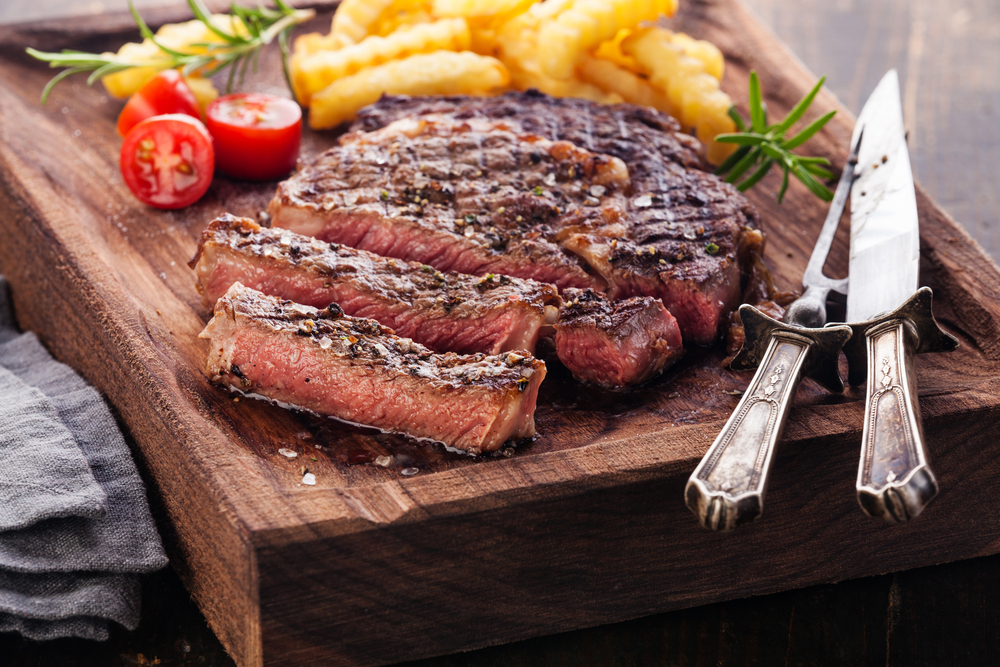 Believe it or not, ribeye steaks are a pretty forgiving cut of meat.
Believe it or not, ribeye steaks are a pretty forgiving cut of meat.
They are considered as one of the tastiest and most elegantly flavored steaks and are cut from the main muscle that is usually attached to the spine.
The fat marbling present in a ribeye steak makes it a breeze, for a guaranteed flavorful and juicy steak.
For a quality stake of ribeye, most people tend to avoid the shelves and head straight to the butcher’s counter to get a steak that is 1-1 ½ inches thick.
Thicker steaks allow you to create a great crust on the outside while cooking them to a perfect medium rare on the inside.
The most important thing to keep in mind when grilling a steak is that you can always throw it back on the grill if it isn’t done enough, but you can never reverse an overcooked steak.
Kosher salt, fresh ground black pepper, medium-rare, there’s no need to pretty much overthink this one.
So, let’s see how to grill ribeye steak!
How To Grill Ribeye Steak
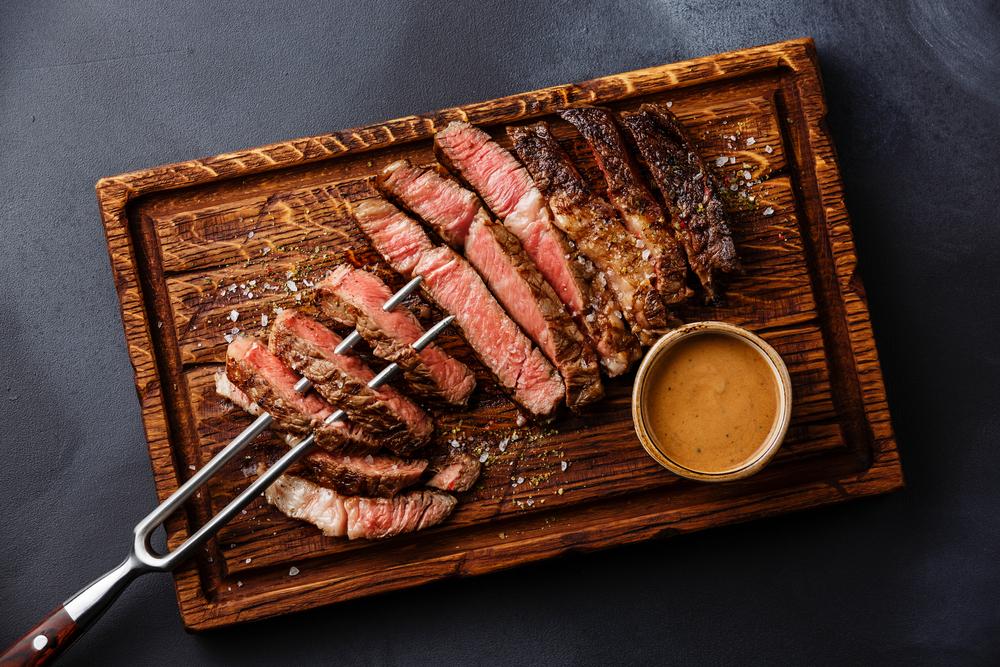
Grilling a ribeye steak is a culinary delight that can result in a juicy, flavorful, and perfectly cooked piece of meat.
Ribeye steak, known for its marbling and rich flavor, is a popular choice for grilling enthusiasts.
Here’s a step-by-step guide on how to grill ribeye steak to perfection.
- Choose the Right Ribeye Steak
Selecting a high-quality ribeye steak is crucial for a delicious outcome. Look for a ribeye steak that is well-marbled with fat, as this will enhance the flavor and tenderness of the meat. Choose steaks that are about 1 to 1.5 inches thick, as thinner steaks may cook too quickly and result in overcooking.
- Prepare the Ribeye Steak
Remove the ribeye steak from the refrigerator and let it sit at room temperature for about 30 minutes before grilling. This will allow the steak to come to room temperature, ensuring more even cooking. Pat the steak dry with paper towels to remove any excess moisture, which can interfere with proper searing.
- Season the Ribeye Steak
Season the ribeye steak generously with salt and pepper on both sides. You can also add other herbs or spices according to your preference, such as garlic powder, onion powder, or rosemary. Avoid using too much salt, as it can draw out moisture from the meat and result in a dry steak.
- Preheat the Grill Preheat
Your grill to high heat, around 450-500°F (230-260°C), for direct grilling. If using charcoal, spread the coals in an even layer. If using a gas grill, turn all burners to high. Preheating the grill ensures a hot surface for searing the steak and creating a flavorful crust.
- Grill the Ribeye Steak
Place the ribeye steak directly on the hot grill grates and close the lid. Let it sear for about 3-4 minutes without moving it, until it develops a nice crust. Flip the steak and sear the other side for another 3-4 minutes.
- Adjust the Heat and Continue Cooking
After searing both sides, move the ribeye steak to a cooler part of the grill or reduce the heat to medium-high for indirect grilling. Continue cooking the steak with the lid closed, flipping it occasionally, until it reaches your desired level of doneness. Use a meat thermometer to check the internal temperature of the steak. For medium-rare, aim for an internal temperature of 130°F (54°C), medium at 135°F (57°C), medium-well at 145°F (63°C), and well-done at 160°F (71°C).
- Rest and Serve the Ribeye Steak
Once the ribeye steak reaches your desired level of doneness, remove it from the grill and let it rest for a few minutes. Resting allows the juices to redistribute, resulting in a juicier and more flavorful steak. Slice the ribeye steak against the grain and serve it with your favorite side dishes, such as grilled vegetables or a baked potato.
In conclusion, grilling a ribeye steak requires high heat for searing and proper temperature control for achieving the desired level of doneness.
By following these steps, you can enjoy a deliciously grilled ribeye steak with a juicy interior and a flavorful crust.
So fire up your grill, season your steak, and get ready to savor the mouthwatering flavors of a perfectly grilled ribeye steak. Enjoy!
There are a Few Essential Tips to Remember
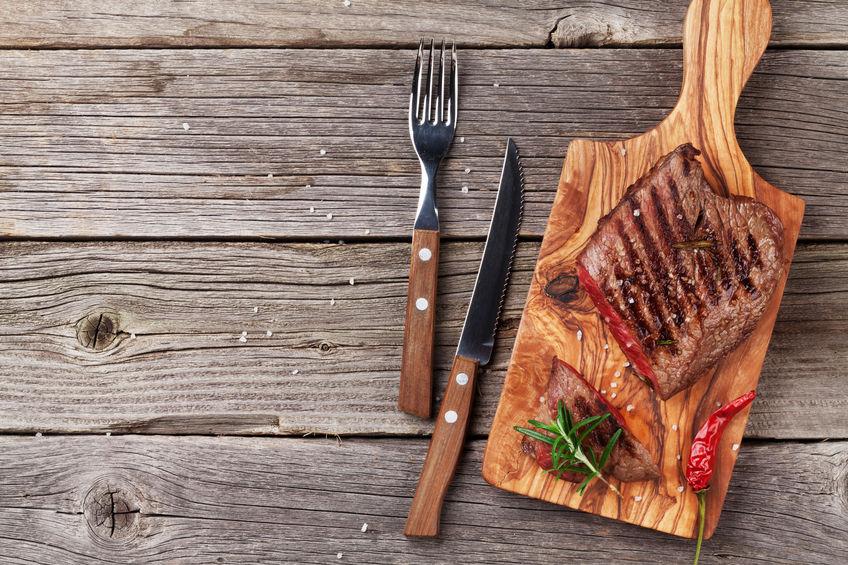
When purchasing a rib-eye steak, opt for a cut with high-fat content, as this will result in a juicier and more flavorful steak.
Avoid meat that appears dry and lacks fat, as it may turn out dry and tough even after cooking.
Look for steaks that are around 1 ¼ – 1 ½ inches thick, as thicker steaks are less prone to overcooking and drying out on the grill.
Before grilling, ensure that your grill grates are clean to prevent any sticking or burning of the meat.
Season the rib-eye steak generously with salt and pepper on both sides, allowing the flavors to penetrate the meat before, during, and after grilling.
Feel free to add any other seasonings or herbs of your choice to suit your taste preferences.
Using a meat thermometer is essential to avoid guesswork when determining the steak’s readiness.
This ensures that you achieve your desired level of doneness, whether it’s medium-rare, medium, medium-well, or well-done.
Remember that carry-over cooking occurs after the steak is removed from the grill, allowing the flavorful juices to redistribute and further enhance the taste.
Grilling a delicious rib-eye steak doesn’t have to be complicated.
Simply season the steak with kosher salt and freshly ground black pepper, and you’re ready to grill.
The result will be a simple yet tasty grilled rib-eye steak that is sure to satisfy your taste buds.
So fire up your grill, follow these tips, and enjoy the mouthwatering flavors of a perfectly grilled rib-eye steak.
Tips for How to Grill Ribeye Steak
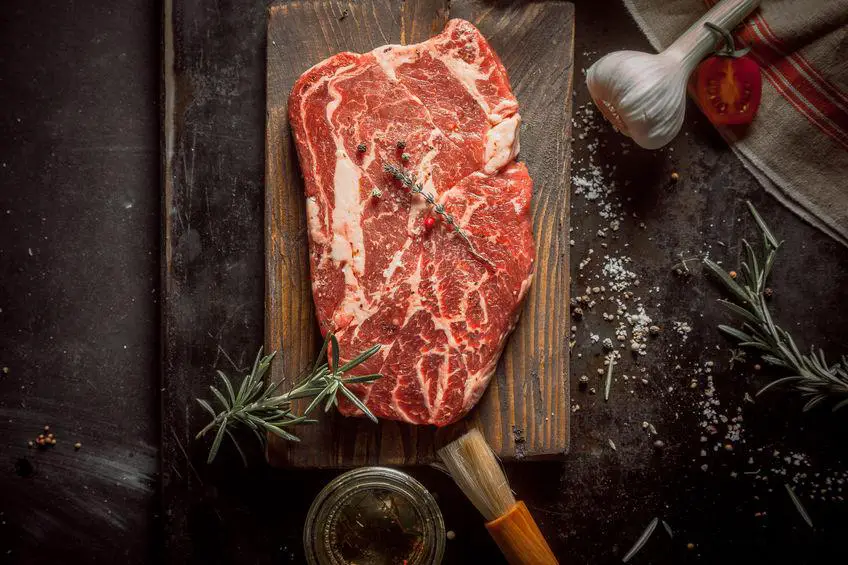
Grilling a rib-eye steak to perfection requires attention to detail and some key tips.
- Choose a rib-eye steak with high-fat content. Look for marbling, which refers to the streaks of fat running through the meat. More marbling means a juicier and more flavorful steak.
- Opt for the right thickness. Aim for a rib-eye steak that is about 1 ¼ – 1 ½ inches thick. Thicker steaks are less likely to overcook and dry out on the grill.
- Clean the grill grates. Make sure your grill grates are clean and free from debris before you start grilling. This helps prevent sticking and ensures even cooking.
- Season generously. Season the rib-eye steak generously with salt and pepper on both sides before grilling. This allows the flavors to penetrate the meat and enhances the overall taste.
- Use a meat thermometer. Invest in a good-quality meat thermometer to accurately gauge the steak’s internal temperature. This helps you achieve your desired level of doneness, whether it’s medium-rare, medium, medium-well, or well-done.
- Allow for carry-over cooking. Keep in mind that the steak will continue to cook after it’s removed from the grill due to carry-over cooking. Let the steak rest for a few minutes before slicing to allow the juices to redistribute and enhance the flavor.
- Keep it simple. A rib-eye steak is delicious on its own with just salt and pepper, but you can also experiment with other seasonings or herbs to suit your taste preferences.
- Pay attention to grill temperature. Preheat your grill to high heat for searing, and then reduce the heat to medium for cooking the steak to your desired doneness.
- Keep an eye on the steak. Avoid leaving the steak unattended on the grill. Keep a close eye on it, flipping it only once during cooking to ensure even cooking on both sides.
- Let the steak rest. Once the steak is cooked to your liking, transfer it to a cutting board and let it rest for a few minutes before slicing. This allows the juices to settle and results in a more flavorful and tender steak.
By following these tips, you can grill a mouthwatering rib-eye steak that is juicy, flavorful, and cooked to perfection.
You Don’t Have to Overthink a Perfect Steak
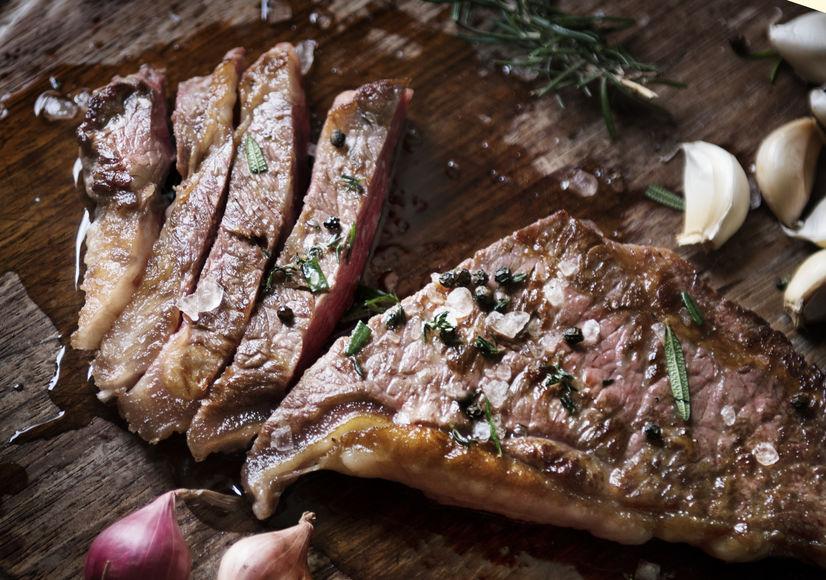
Grilling a thick-cut, bone-in rib-eye steak is a tantalizing and mouthwatering experience that can elevate any summer meal.
Whether you’re using a gas or charcoal grill, the rib-eye steak, cut from the rib area, is known for its perfect balance of fat and flavor.
Investing in a bone-in rib-eye steak is a wise choice, as the bone acts as a natural baster, keeping the meat moist and adding flavor as the juices evaporate during cooking.
Opt for a thick-cut rib-eye steak, as it yields a more tender and flavorful result compared to thinner cuts that can easily overcook.
When selecting your rib-eye steak, look for plenty of marbling, which refers to the streaks of fat running through the meat.
This marbling adds juiciness and flavor to the steak when cooked.
Season your rib-eye steak simply with fresh black pepper and kosher salt to let the natural flavors shine.
Pay close attention to the grilling process, as overcooking can easily ruin a rib-eye steak.
Use a meat thermometer to ensure accurate cooking and achieve your desired level of doneness, whether it’s medium-rare, medium, medium-well, or well-done.
With the right cut of rib-eye steak, proper seasoning, and careful cooking, you can impress your guests with a perfectly grilled, flavorful, and tender rib-eye steak.
so fire up the grill, and get ready to indulge in a delicious meal that will make any gathering a feast to remember.
